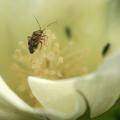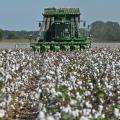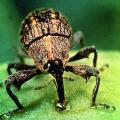Insects-Crop Pests
Many different species of insect pests attack crops. Each of these pests is capable of causing economic yield loss, and some are capable of totally destroying a crop. Knowing when to treat for insect pests in crops is vital to keeping yields high and controlling the costs of agricultural production.
Control insects in cotton, soybeans, corn, grain sorghum, wheat, sweet potatoes, rice, peanuts, and pastures with the following information produced by MSU Extension.
Virtual Insect Scout School for Agronomic Crops
Publications
News
Insect pests are ongoing issues in row crop farming, and deciding when, how and whether to treat is never a simple decision.
Offered by the Mississippi State University Extension Service, the Row Crop Short Course in December featured sessions informed by MSU’s ongoing research that helps growers make management decisions. Several sessions addressed insect control from a variety of angles.
STARKVILLE, Miss. -- Agricultural producers and consultants are encouraged to register for the annual Mississippi State University Row Crop Short Course.
The tarnished plant bug is Mississippi’s No. 1 most economically damaging insect in cotton, costing an estimated $42 million in yield losses plus millions more spent to control the pest.
Success Stories
When Mississippi achieved statehood in 1817, its cotton industry was only beginning to take off. By 1917, boll weevils were devastating the state’s cotton crop and its economy.






